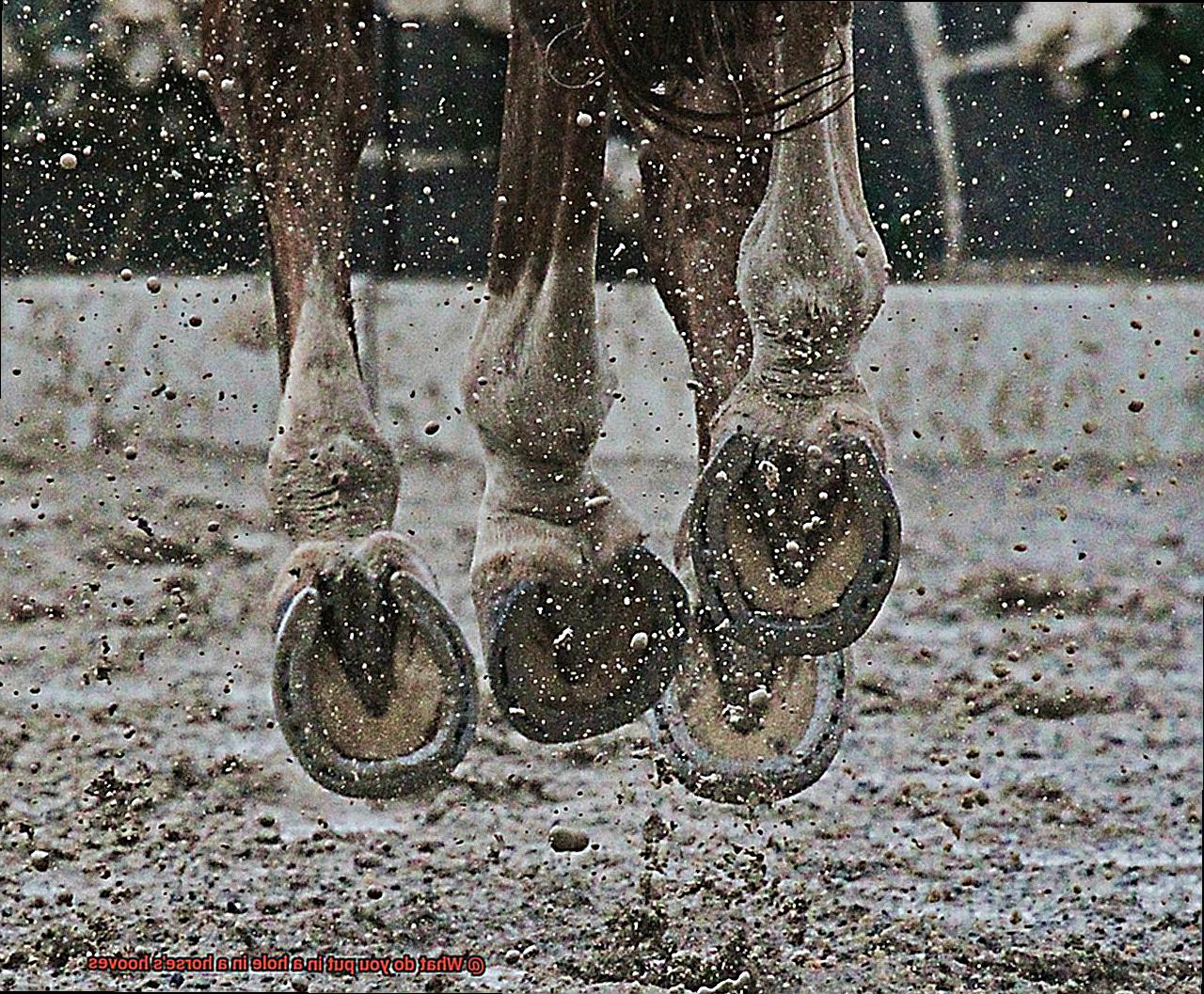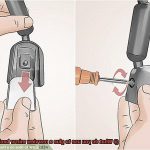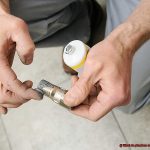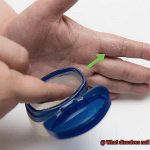If you’re a horse owner or enthusiast, you know that hoof problems can be a real pain in the…well, hoof. And one of the most common issues is a hole in your equine friend’s foot. This pesky problem can cause serious discomfort and even lead to lameness if not addressed promptly. But don’t worry, there’s good news: fixing it is usually pretty simple. The question is, what do you put in a hole in a horse’s hooves?
As someone who loves horses, seeing them struggle with any sort of ailment can be heartbreaking. Whether you’re an experienced rider or just starting out, knowing how to help your horse heal quickly and comfortably is crucial.
Before we get into the nitty-gritty of what to put in a hole in a horse’s hoof, let’s take a quick look at what causes these holes in the first place. They can range from minor puncture wounds to more severe abscesses or even fractures. Whatever the cause may be, it’s important to act quickly and effectively.
That’s where this blog post comes in. We’ll cover everything you need to know about treating holes in your horse’s hooves – from identifying the issue to different treatment options available. By the end of this post, you’ll feel confident and equipped with the knowledge necessary to help your beloved horse get back on their feet (literally.). So let’s dive right into it.
Types of Glue Used for Filling in Holes in Horse’s Hooves
Contents
- 1 Types of Glue Used for Filling in Holes in Horse’s Hooves
- 2 Advantages and Disadvantages of Acrylic Glue
- 3 Advantages and Disadvantages of Urethane Glue
- 4 Advantages and Disadvantages of Cyanoacrylate (Super) Glue
- 5 Other Materials Used to Fill in Holes in Horse’s Hooves
- 6 The Importance of Seeking Professional Help When Treating Hoof Injuries
- 7 How to Properly Fill in a Hole in a Horse’s Hoof
- 7.1 Step 1: Clean the affected area thoroughly using a hoof pick and a stiff brush.
- 7.2 Step 2: Choose an appropriate filling material.
- 7.3 Step 3: Mix the filler according to the manufacturer’s instructions.
- 7.4 Step 4: Allow the filler to dry completely before allowing the horse to walk on it.
- 7.5 Step 5: Seek guidance from a veterinarian or farrier when treating hoof injuries in horses.
- 8 Tips for Ensuring the Best Results When Treating Hoof Injuries
- 9 Conclusion
Filling in holes in a horse’s hooves is a delicate task that requires the use of the right materials. One of the most popular solutions is using glue, which provides a strong and flexible bond that helps the hoof heal. Let’s take a closer look at some of the different types of glue that can be used for this purpose.
Acrylic adhesive is an excellent choice for smaller holes and cracks in the hoof. This type of glue sets quickly and is flexible, allowing the hoof to move naturally. It is easy to apply and a great option for horse owners or farriers who are new to hoof repair. Acrylic adhesive is also ideal for filling in shallow holes since it doesn’t need much material to fix them.
Urethane adhesive is another option that can be used for more severe hoof damage. It has a longer working time than acrylic adhesive, allowing for more precise application. Urethane adhesive is also strong and flexible, making it a great choice for filling in larger holes or cracks. It can also be used as a preventative measure against future damage, as it provides additional protection to the hoof wall.
For more serious hoof damage, such as deep cracks or holes, epoxy glue may be used. This type of glue is extremely durable and can provide long-lasting repair. However, it takes longer to dry than other types of glue, so it may not be suitable for all situations. Epoxy glue is also less flexible than other types of glue, so it should only be used when necessary.
In addition to these types of glue, there are also specialized products available that are designed specifically for hoof repair. These products often contain a combination of different adhesives and additional ingredients that can help promote hoof health while filling in holes or cracks. These products usually have antimicrobial properties that prevent bacteria from forming in the hole.
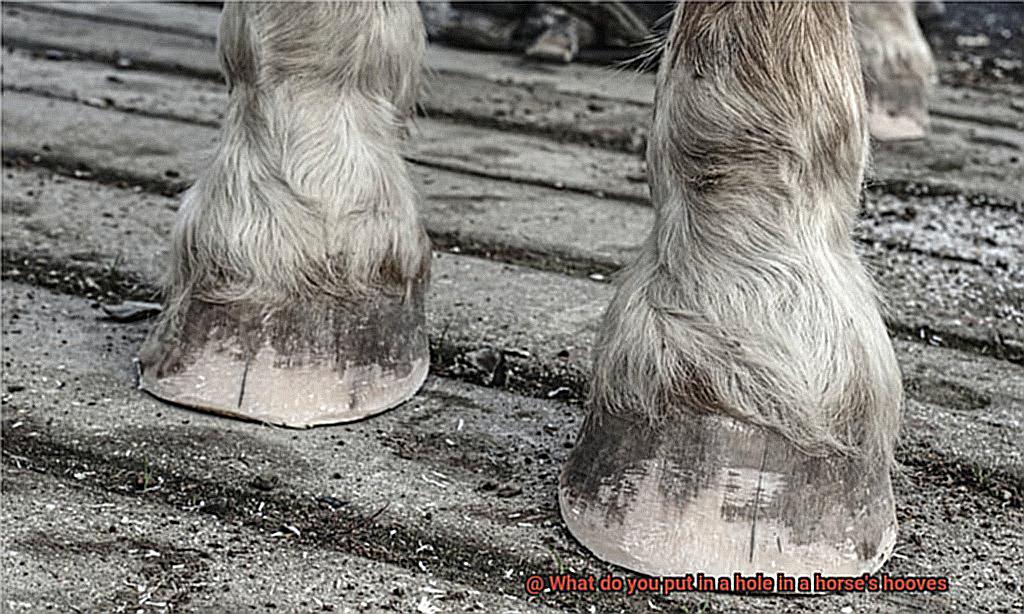
It’s important to remember that while glue can be an effective solution for filling in holes in a horse’s hooves, it should always be used under the guidance of a veterinarian or farrier. Hoof damage can be an indication of underlying issues, and it’s important to address these issues to ensure the horse’s long-term health and well-being.
In conclusion, choosing the right type of glue for filling in holes in a horse’s hooves is an essential part of the healing process. Whether you opt for acrylic, urethane, or epoxy glue, it’s crucial to choose a product that is appropriate for the specific situation.
Advantages and Disadvantages of Acrylic Glue
Among the many options out there, acrylic glue is one of the most common used for horse hoof repair. But what are the advantages and disadvantages of using this type of glue? Let’s explore.
Advantages:
- Lightning-fast setting time: One of the biggest advantages of acrylic glue is its rapid setting time. This means that repairs can be made quickly and efficiently, which can be especially important in emergency situations.
- Strong and durable: Acrylic glue is also incredibly strong and can withstand daily wear and tear, making it a long-lasting solution for hoof repair. It provides a secure bond that can endure the rigors of daily use.
- Versatile: Acrylic glue is a versatile option for repairing both minor and major hoof damage, including cracks, chips, and holes. It can also be used to attach horseshoes or other hoof protection devices.
Disadvantages:
- Difficult to remove: Once acrylic glue has set, it can be challenging to remove. This can make future repairs more difficult, and improper removal can even cause further damage to the hoof. Careful removal is necessary to prevent any harm to the horse.
- Requires careful application: Acrylic glue must be applied correctly to ensure a proper bond. If not, it may fail to adhere correctly or even cause irritation or inflammation in the surrounding tissue. Proper application is essential for effective results.
Advantages and Disadvantages of Urethane Glue
Urethane glue is a popular option for filling hoof holes due to its strong and long-lasting bond. Its ability to seal the hole and prevent debris or bacteria from entering the hoof makes it especially useful for high-intensity activities.
Applying urethane glue is easy and straightforward; it can be molded to fit the size and shape of the hole, making it versatile for different horses. However, as with any product, there are some potential downsides to using urethane glue. One significant disadvantage is that once it’s applied, it can be challenging to remove, making it difficult for farriers to clean and treat the hoof adequately.
Moreover, if improperly applied, urethane glue can cause harm to the surrounding tissue and sensitive areas of the hoof. This makes it essential to consider all options when deciding whether or not to use urethane glue. It’s always best to consult with a professional farrier or veterinarian before making any decisions.
In some cases, other options such as acrylic or traditional hoof packing may be more suitable depending on the horse’s specific needs. However, if applied correctly, urethane glue can be an effective solution for filling hoof holes in horses.
Advantages and Disadvantages of Cyanoacrylate (Super) Glue
If you’re seeking a quick fix for your horse’s hoof holes or cracks, cyanoacrylate glue, commonly known as “super glue,” may be the solution you need. As an expert in the equine industry, I’ve witnessed this adhesive gain popularity among farriers and horse owners. However, before you opt to use it, let’s explore its advantages and disadvantages.
Advantages:
- Fast Bonding: One of the most significant benefits of cyanoacrylate glue is its quick and effective bonding capabilities. It only takes seconds to dry, making it an expedient option for small holes or cracks.
- Water-Resistant: Once the glue dries, it becomes impervious to water and moisture, making it ideal for horses that spend time in wet environments.
- Non-Toxic: When used correctly, cyanoacrylate glue is safe for horses and does not cause any harm or irritation to their hooves.
- Easy to Apply: Applying the glue is a straightforward process that can be done using a syringe or dropper, making it a convenient option for farriers and horse owners.
Disadvantages:
- Limited Strength: Although this adhesive is effective for small holes or cracks, it may not be robust enough for more severe damage.
- Limited Flexibility: Over time, the glue can become brittle and crack under pressure, leading to additional damage to the hoof.
- Limited Durability: Cyanoacrylate glue is not a permanent solution and may require reapplication periodically to maintain its effectiveness.
Other Materials Used to Fill in Holes in Horse’s Hooves
Fortunately, there are several materials available to help fill in those pesky holes and get your horse back on track.
Acrylic or polyester resin is a common option that provides extra support and stability to the hoof. This quick-drying material is often used in conjunction with other treatments to promote healing and prevent further damage.
If you’re looking for a more temporary solution, silicone or urethane-based caulk may be the perfect fit. This material can be easily removed and replaced as needed and provides essential cushioning and protection to the affected area. This option is especially beneficial for horses experiencing pain or discomfort.
For those who prefer natural options, beeswax or clay may be used to fill in holes in your horse’s hooves. These materials offer some protection and support but may not be as durable as synthetic options, requiring more frequent reapplication.
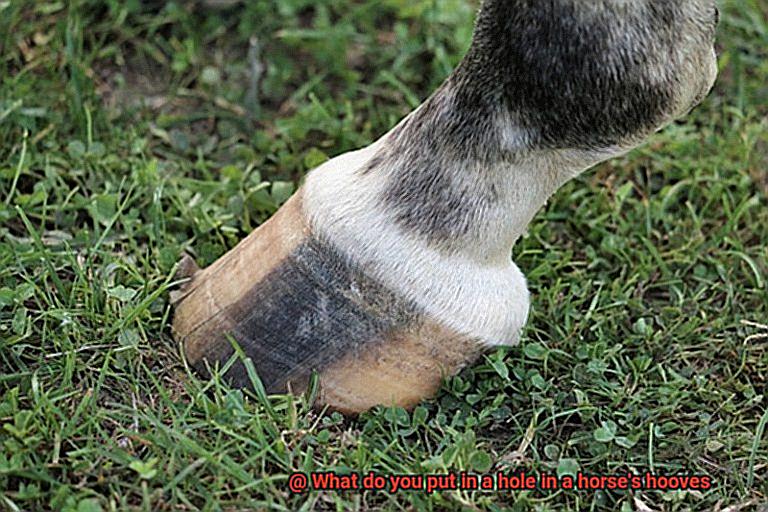
It’s crucial to work closely with a veterinarian or farrier to determine the best course of action for your horse’s unique situation. The severity of the damage, individual needs, and preferences will play a significant role in deciding which material to use.
The Importance of Seeking Professional Help When Treating Hoof Injuries
That’s why seeking professional help when treating hoof injuries is essential.
Firstly, horses’ hooves are complex structures that require specialized knowledge to treat. A veterinarian or farrier who specializes in equine podiatry has the necessary expertise to evaluate and treat any injury to a horse’s hoof properly. They understand the unique anatomy of the hoof and can identify the underlying cause of the injury, providing a more effective treatment plan.
Secondly, seeking professional help provides an accurate diagnosis and treatment recommendations based on the type and severity of the injury. A simple puncture wound may seem like a minor injury, but it can be severe enough to damage sensitive structures inside the hoof. A vet can determine if this is the case and recommend appropriate treatment to prevent further damage or complications.
Thirdly, treating a horse’s hoof injury without professional help can lead to complications and further damage. Using incorrect materials to fill a hole in a horse’s hoof can lead to infection, inflammation, or even lameness. A professional can recommend the appropriate materials to use based on the type and location of the injury, preventing any further damage.
Lastly, seeking professional help when treating a hoof injury can ensure a faster and more complete recovery for the horse. A veterinarian or farrier can monitor the healing process and adjust treatment as necessary to promote optimal healing. This allows your horse to recover as fast as possible and get back to their daily routine.
How to Properly Fill in a Hole in a Horse’s Hoof
If your horse has a hole in its hoof, it’s essential to fill it properly to prevent further damage. Here are five key steps to follow:
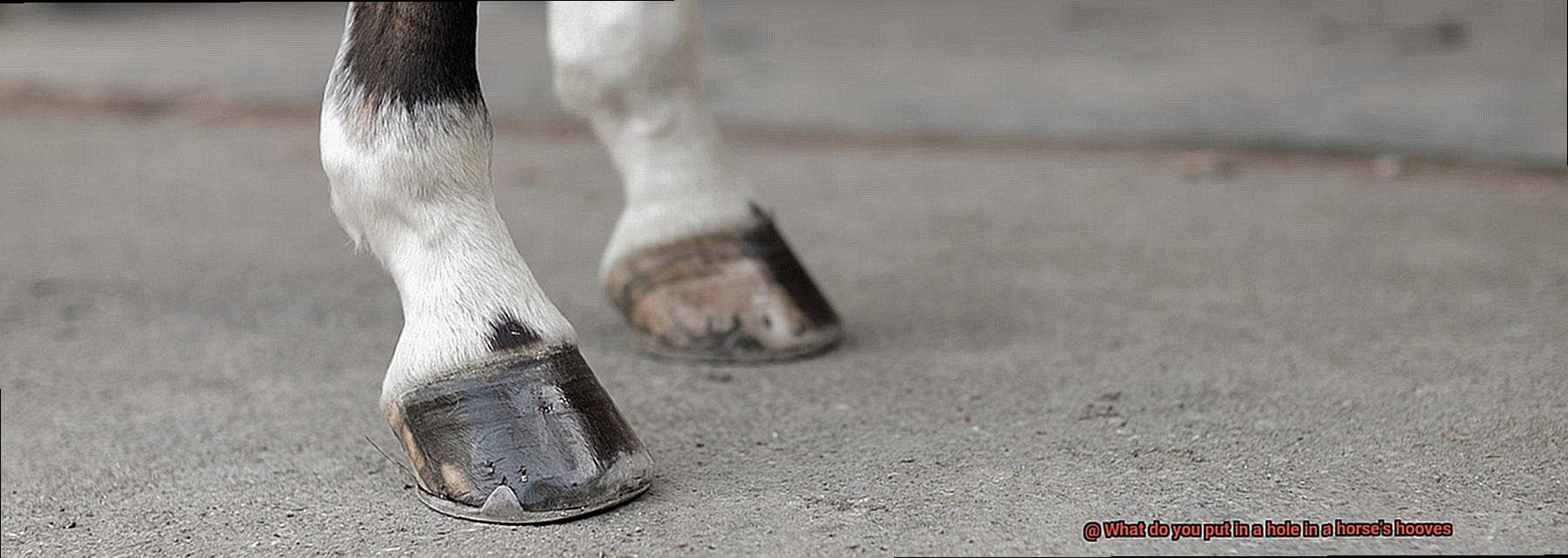
Step 1: Clean the affected area thoroughly using a hoof pick and a stiff brush.
This is crucial to ensure that there is no dirt or debris left inside the hole, which can lead to infections.
Step 2: Choose an appropriate filling material.
Hoof filler or putty is one of the most common options available as it is easy to apply and hardens over time, creating a solid surface for the horse to walk on. However, there are other options such as glue, acrylics, and silicone that may be more suitable depending on the situation.
Step 3: Mix the filler according to the manufacturer’s instructions.
Then, use a small spatula or putty knife to carefully apply the filler to the hole, making sure not to overfill it. It’s important to work quickly and carefully during this step as some fillers may begin to harden within minutes.
Step 4: Allow the filler to dry completely before allowing the horse to walk on it.
The drying time may vary depending on the type of filler used and the size of the hole. It’s important not to rush this step as prematurely putting weight on the hoof may damage the filling material.
Step 5: Seek guidance from a veterinarian or farrier when treating hoof injuries in horses.
They can provide valuable advice on proper care and treatment options.
Tips for Ensuring the Best Results When Treating Hoof Injuries
Hoof injuries can be a real problem for horses, but with proper treatment, they can heal quickly and effectively. Here are five tips to ensure the best results when treating hoof injuries:
Keep it clean
The cleanliness of the wound is crucial to promote healing. Before treating the hoof injury, make sure it’s clean and dry. Use a hoof pick to remove any dirt or debris from the hoof, and wash it with warm water and mild soap. This will help prevent infection and promote healing.
Consult a veterinarian
If you’re unsure about the severity of the injury or how to treat it, it’s always best to consult with a veterinarian. They can assess the injury and recommend the best course of treatment based on their expertise.
Choose the right materials
When treating a hole in a horse’s hooves, it’s essential to use appropriate materials that will promote healing and prevent further damage to the hoof. Glue or adhesive is one common material used to fill in the hole and provide support to the hoof. However, be sure to choose the appropriate type of glue for the size and severity of the injury.
Follow instructions carefully
When using any type of glue or adhesive, it’s crucial to follow the instructions carefully. Improper use can result in ineffective treatment or even further damage to the hoof. Make sure you understand how to apply the product and how often it should be reapplied.
Monitor progress
After treating the hoof injury, keep a close eye on how it’s healing. Check the hoof regularly for any signs of infection or other complications. If you notice anything unusual, contact your veterinarian right away. Monitoring progress is essential to ensure that your horse is on track for a speedy recovery.
8Vms7Z0vC5s” >
Conclusion
In summary, dealing with a hole in a horse’s hoof necessitates specialized knowledge and expertise. It is critical to identify the cause of the injury and take prompt action to prevent further harm or complications. The choice of materials, such as glue or adhesive, is crucial for filling up the hole and promoting healing. For smaller holes, acrylic adhesive works best, while urethane adhesive is suitable for more severe damage. Epoxy glue should only be used when necessary for deep cracks or holes.
When it comes to treating hoof injuries in horses, seeking professional assistance from a veterinarian or farrier who specializes in equine podiatry is essential. They can provide an accurate diagnosis and treatment recommendations based on the type and severity of the injury. Treating a horse’s hoof injury without professional help can result in complications and further damage.
To properly fill a hole in a horse’s hoof, you must thoroughly clean the affected area, select an appropriate filling material, mix it according to instructions, allow it to dry completely before allowing the horse to walk on it, and seek guidance from a veterinarian or farrier when treating hoof injuries in horses.
By following these guidelines for ensuring optimal outcomes when treating hoof injuries, you can aid your beloved horse in healing quickly and comfortably.

